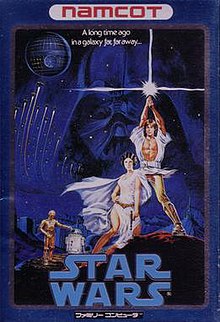
Luke Skywalker is a fictional character in the Star Wars franchise. He was introduced in the original film trilogy and also appears in the sequel trilogy. Raised as a moisture farmer on the planet Tatooine, Luke joins the Rebel Alliance and becomes a pivotal figure in the struggle against the Galactic Empire. He trains as a Jedi under Obi-Wan Kenobi and Yoda, and eventually confronts his father, the Sith Lord Darth Vader. Years later, Luke trains his nephew Ben Solo and mentors the scavenger Rey. Luke is the twin brother of Leia Organa.
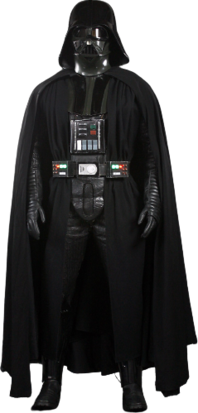
Darth Vader is a fictional character in the Star Wars franchise. He was first introduced in the original film trilogy as one of the leaders of the Galactic Empire. The prequel trilogy chronicles his transformation from the Jedi Knight Anakin Skywalker into the Sith Lord Darth Vader. His metamorphosis begins when he is lured to the dark side of the Force by Chancellor Palpatine, who later becomes Emperor. After a lightsaber battle with his former mentor Obi-Wan Kenobi, Vader is severely injured and is transformed into a cyborg. He serves Palpatine for over two decades, hunting down the remaining Jedi and attempting to crush the Rebel Alliance. When Palpatine tries to kill Vader's son, Luke Skywalker, the Sith Lord turns against his master and destroys him. Vader is the husband of Padmé Amidala, the father of Luke and his twin sister Leia Organa, and the grandfather of Ben Solo.
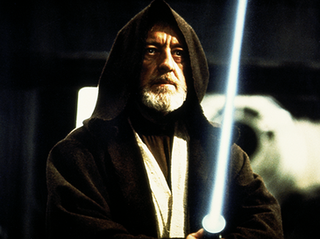
Obi-Wan "Ben" Kenobi is a character in the Star Wars franchise. In the original film trilogy, he is a Jedi Master who trains Luke Skywalker in the ways of the Force. In the prequel trilogy, he mentors Luke's father, Anakin Skywalker. Obi-Wan is portrayed by Alec Guinness in the original trilogy and by Ewan McGregor in the prequel films. McGregor also plays the character in the television series Obi-Wan Kenobi. Guinness' performance in Star Wars (1977) earned him the Saturn Award for Best Supporting Actor, as well as a nomination for the Academy Award for Best Supporting Actor.

The Rebel Alliance is an organization that features in the fictional world of the Star Wars franchise. The Alliance is portrayed as a stateless coalition of rebel dissidents and defectors who oppose the Galactic Empire and its authoritarian rule. Its stated goal is to restore the liberal governance of the previous Galactic Republic, which had been dissolved after its leader Palpatine seized absolute power and declared himself emperor. It is the main protagonistic faction of the original Star Wars trilogy.
The Battle of Yavin takes place in the fictional universe of Star Wars. It pits the Galactic Empire against the Rebel Alliance around the gas giant planet Yavin and its fourth moon.

Yavin is a fictional planet in the Star Wars galaxy. It first appeared in the 1977 film Star Wars and is depicted as a large red gas giant with an extensive satellite system of moons. The hidden military base of the Rebel Alliance is located on its fourth moon, Yavin 4.
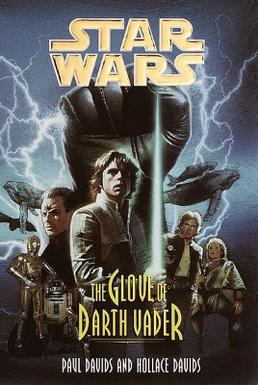
Jedi Prince is a series of science fiction young-reader novels set in the Star Wars universe, written by Paul and Hollace Davids. They were published by Bantam Skylark between 1992 and 1993. The series takes place about a year after Return of the Jedi, between the events of the books The Truce at Bakura (1993) and Luke Skywalker and the Shadows of Mindor (2008).

Star Wars is an action game based on the film Star Wars. It was released by Victor Musical Industries for the Family Computer in Japan on November 15, 1991 and by JVC Musical Industries for the Nintendo Entertainment System in North America in November 1991 and in Europe on March 26, 1992. An official mail order "Hint Book" was available for the game upon its release.

Star Wars: Episode III – Revenge of the Sith is an action video game based on the movie of the same name. It was released on May 5, 2005, for the PlayStation 2, Xbox, Game Boy Advance, Nintendo DS, and Symbian OS. For the Xbox 360's backwards compatible lineup, Revenge of the Sith is one out of the 400+ backwards compatible games for the 360. As part of the PlayStation 2 classics program, the PlayStation 2 version was re-released in Europe on the PlayStation Network on February 11, 2015, and in North America on April 28, 2015. Meanwhile, the Xbox version was also added to the backwards compatibility list for the Xbox One and Xbox Series X/S on November 15, 2021.
Star Wars Infinities is a graphic novel trilogy published by Dark Horse Comics from 2002 to 2004. It tells a non-canon alternate version of each film in the original Star Wars trilogy in which a point of divergence occurs and changes the outcome of the story. Each individual Infinities story is unrelated to the others and is set within the timeline of their original film.

Tag and Bink are the main characters in a Star Wars spoof series of comic books that parody the films. The characters were created by writer Kevin Rubio and artist Lucas Marangon. They are a pair of minor characters whose activities deliberately or accidentally influence the events in the first and second film trilogies in ways that explain some of the implausible events of the series. The title of their initial appearance—Tag & Bink Are Dead—is a reference to the Tom Stoppard play Rosencrantz and Guildenstern Are Dead, itself titled after a line from Hamlet.

Star Wars Trilogy Arcade is an arcade game developed by Sega's AM Annex subsidiary and released in 1998. It is a 3D rail shooter based on the original trilogy of Star Wars films, released alongside their special editions. Accompanied by the Star Wars Trilogy pinball game, it is the second in Sega's Star Wars Arcade series; it is preceded by 1993's Star Wars Arcade and followed by 2000's Star Wars Racer Arcade.
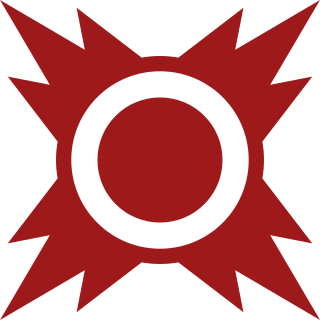
The Sith are the main antagonists in the fictional universe of the Star Wars franchise. They are the antithesis and ancient enemies of the Jedi. The Sith Order is depicted as an ancient cult of warriors who draw strength from the dark side of the Force and use it to seize power by any means necessary, including terrorism and mass murder; their ultimate goals are to destroy the Jedi and rule the galaxy. The various antagonistic factions in the franchise, namely the Confederacy of Independent Systems, the First Galactic Empire, the Imperial Remnant, and the First Order, all originated with the Sith. Sith, known individually as Sith Lords, are, by nature, ruthless. At any point a single individual assumes absolute authority amongst their kind and is granted the honorific Dark Lord of the Sith. Sith culture is based on perpetual treachery and betrayal. The fate of Sith Lords is, typically, to be murdered and replaced by their own apprentices. Sith teach their apprentices to revere the dark side of the Force, to give full reign to aggressive emotions such as rage and hatred, and to believe that others are expendable in the pursuit of power, thus making the Lords' demise inevitable.

Chewbacca, nicknamed "Chewie", is a fictional character in the Star Wars franchise. He is a Wookiee—a tall, hairy, highly intelligent species originating from the planet Kashyyyk. He is 7.5 feet (2.3 m) tall, and typically wears only a bandolier and a tool pouch. He carries a bowcaster, a traditional Wookiee weapon, and he speaks the Wookiee language Shyriiwook. He first appears in the original Star Wars film as the loyal friend of the smuggler Han Solo. He is also the co-pilot of Han's starship, the Millennium Falcon.
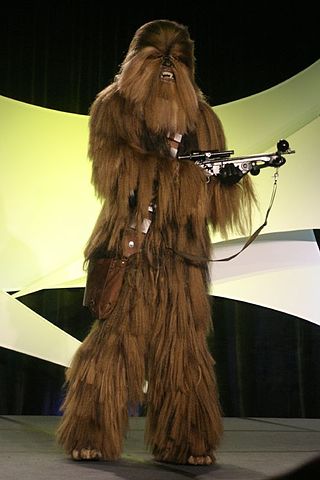
Wookiees are fictional humanoid aliens in the Star Wars universe, native to the forest planet Kashyyyk. They are distinguished from humans by their gigantism, hirsutism, and physical strength. The most prominent Wookiee in the films is Chewbacca, the co-pilot of the Millennium Falcon, and best friend to Han Solo.
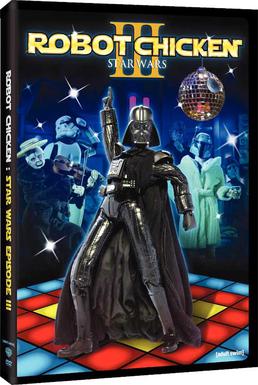
"Robot Chicken: Star Wars Episode III" is a 2010 episode special of the television comedy series Robot Chicken, and the third and final installment in the Annie Award-winning and Emmy-nominated Robot Chicken: Star Wars trilogy. It premiered on Cartoon Network's Adult Swim programming block on December 19, 2010. The special is 45 minutes long, as opposed to the usual 11-minute Robot Chicken runtime and the 21-minute runtime of the two previous Star Wars specials. It was the final Robot Chicken: Star Wars special.

"Phineas and Ferb: Star Wars" is a one-hour long crossover episode of the American animated series Phineas and Ferb, featuring characters from Star Wars. The 41st broadcast episode of the fourth season and the 215th broadcast episode overall of the series, it aired on July 26, 2014, on Disney Channel and later on Disney XD on August 4, 2014. The episode's plot, while not considered canon in the Star Wars timeline, is a retelling of the 1977 film Star Wars: Episode IV – A New Hope in the style of Rosencrantz and Guildenstern Are Dead, where the Phineas and Ferb characters interact with the Star Wars characters.

Star Wars Battle Pod is a 2014 arcade game based on the franchise Star Wars. It was unveiled at the New York Comic Con on October 8, 2014.

A Star Warscomic strip ran in both daily strips and Sunday strips, originally distributed between 1979 and 1984 by two American newspaper publishers, the Los Angeles Times Syndicate and Watertown Daily Times.
